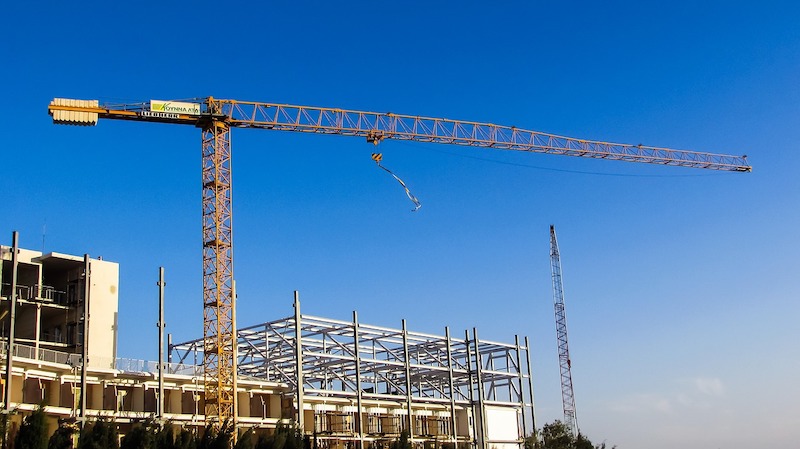Construction employment declined by 61,000 in February, while the sector’s unemployment rate soared to 9.6% amid severe winter weather and continuing weakness in new nonresidential projects, according to an analysis by the Associated General Contractors of America of government data released today. Association officials urged Congress and the Biden administration to focus on new infrastructure funding, address rising materials prices and avoid disruptive measures like the PRO Act to stem further construction job losses.
“The steep decline in construction employment in February continues a downward trend in nonresidential activity that began before the disruptions caused by last month’s freezes and power losses,” said Ken Simonson, the association’s chief economist. “Despite recovery in some parts of the economy, private nonresidential construction is still experiencing many canceled and postponed projects and few new starts.”
Construction employment slumped by 61,000 from January to February, the first overall decline since April 2020. Employment totaled 7,340,000, a decrease of 308,000 or 4.0% from the most recent peak in February 2020.
The job loss was concentrated in nonresidential construction, with a decline of 60,800 jobs in February, following a dip of 400 jobs in January. The February 2021 total was 316,000 jobs or 6.8% less than a year earlier. Only half the jobs lost in the first two months of the pandemic had been regained by February. In the latest month, nonresidential building contractors shed 3,300 jobs and nonresidential specialty trade contractors lost 5,500 workers, while heavy and civil engineering construction firms—the category most likely to be affected by winter storms—lost 20,800 employees.
Residential construction employment—comprising residential building and specialty trade contractors—inched down by 200 jobs in February. But the sector’s employment remained slightly higher than a year ago.
Unemployment in construction soared over the past 12 months. A total of 921,000 former construction workers were unemployed, up from 531,000 a year earlier and the highest for February since 2014. The industry’s unemployment rate in February was 9.6%, compared to 5.5% in February 2020.
Association officials urged members of Congress to work with the Biden administration to quickly pass needed new infrastructure investments. They also urged the president to take steps to address soaring construction materials prices, including for lumber and steel, by easing tariffs and exploring steps to boost domestic production. They added that Congress should drop plans to impose the PRO Act, which would harm workers and undermine the fragile economic recovery.
“Washington officials can’t change the weather, but they can help boost demand for infrastructure, address spiking steel and lumber prices and avoid anti-recovery measures like the PRO Act,” said Stephen E. Sandherr, the association’s chief executive officer. “Stripping workers of their privacy and denying them the absolute right to secret ballot elections, as the PRO Act does, won’t boost demand for construction or put more people to work.”
Related Stories
Market Data | Aug 12, 2021
Steep rise in producer prices for construction materials and services continues in July.
The producer price index for new nonresidential construction rose 4.4% over the past 12 months.
Market Data | Aug 6, 2021
Construction industry adds 11,000 jobs in July
Nonresidential sector trails overall recovery.
Market Data | Aug 2, 2021
Nonresidential construction spending falls again in June
The fall was driven by a big drop in funding for highway and street construction and other public work.
Market Data | Jul 29, 2021
Outlook for construction spending improves with the upturn in the economy
The strongest design sector performers for the remainder of this year are expected to be health care facilities.
Market Data | Jul 29, 2021
Construction employment lags or matches pre-pandemic level in 101 metro areas despite housing boom
Eighty metro areas had lower construction employment in June 2021 than February 2020.
Market Data | Jul 28, 2021
Marriott has the largest construction pipeline of U.S. franchise companies in Q2‘21
472 new hotels with 59,034 rooms opened across the United States during the first half of 2021.
Market Data | Jul 27, 2021
New York leads the U.S. hotel construction pipeline at the close of Q2‘21
Many hotel owners, developers, and management groups have used the operational downtime, caused by COVID-19’s impact on operating performance, as an opportunity to upgrade and renovate their hotels and/or redefine their hotels with a brand conversion.
Market Data | Jul 26, 2021
U.S. construction pipeline continues along the road to recovery
During the first and second quarters of 2021, the U.S. opened 472 new hotels with 59,034 rooms.
Market Data | Jul 21, 2021
Architecture Billings Index robust growth continues
AIA’s Architecture Billings Index (ABI) score for June remained at an elevated level of 57.1.
Market Data | Jul 20, 2021
Multifamily proposal activity maintains sizzling pace in Q2
Condos hit record high as all multifamily properties benefit from recovery.

















